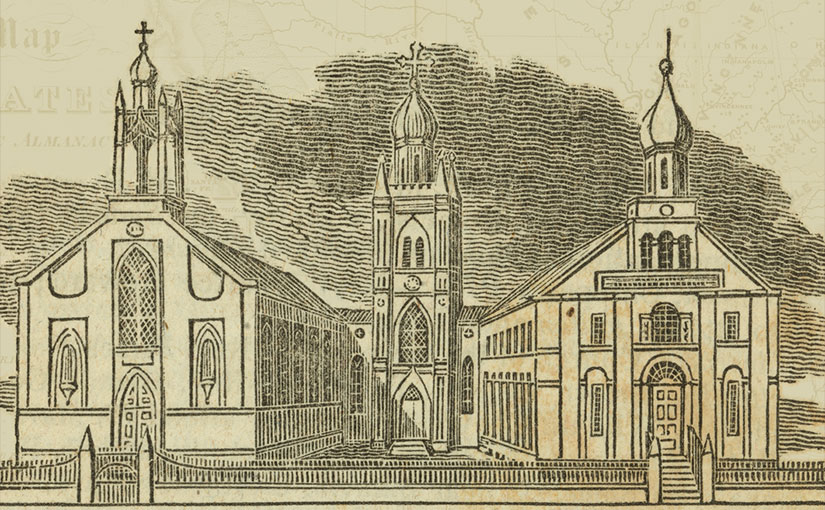“Under these distressful feelings, one consideration alone relieved me . . . and that was, the hope of vindicating your religion to your own selves at least, and preserving the steadfastness of your faith.” — John Carroll, An Address to the Roman Catholics of the United States of America
With these words, John Carroll, head of the fledgling Catholic Church in the United States and future bishop, encouraged his fellow Catholics in 1784. Catholics held a precarious position in the Early Republic despite having gained more freedom to practice their religion after the Revolution. By the 1840s, in the face of increasing sectarian-driven violence, Catholicism had taken firm institutional root.
This exhibition displays examples of American Catholicism expressed through (mostly) printed texts from 1783 through the early 1840s. They include the earliest Catholic bibles published by Mathew Carey, and editions of Thomas à Kempis’ The Imitation of Christ used and produced in the United States; polemical pamphlets with sexual and political subtexts that flew back and forth across the Atlantic; no-holds-barred dueling sectarian newspapers; books and pamphlets created in reaction to mob violence against the Ursuline convent school near Boston; and official reports that mapped the Church’s growth and growing pains.
This exhibition is curated by Rachel Bohlmann and Jean McManus and is open to the public through August 11, 2017.
